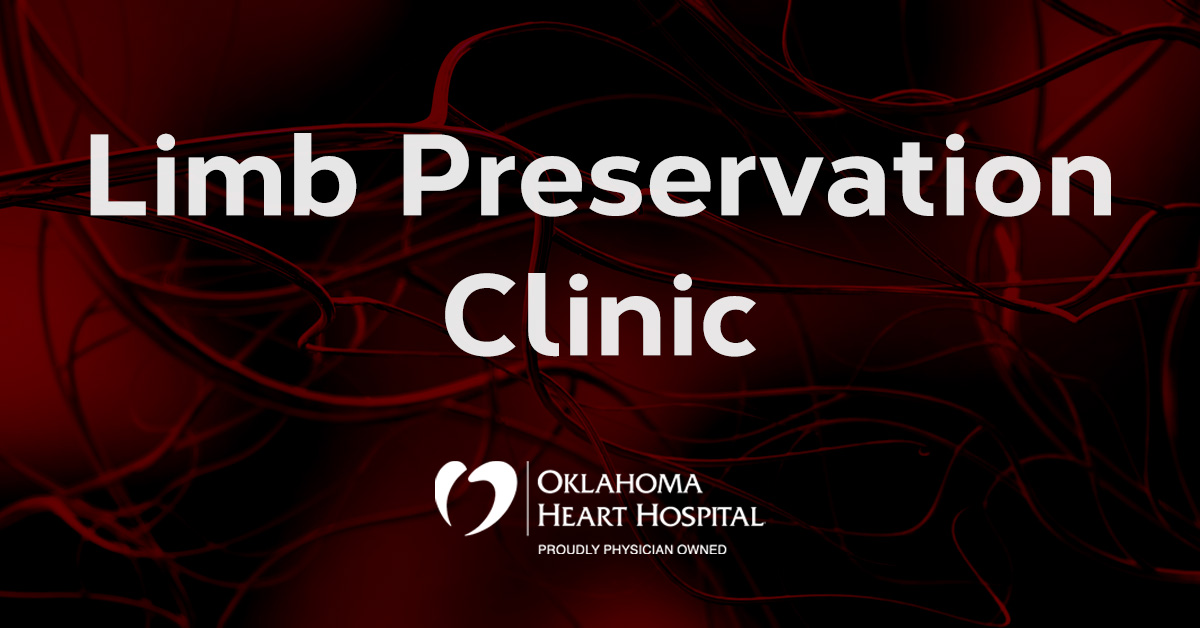OHH Clinic Treats Patients at Risk of Losing Limbs

Oklahoma has the third highest rate of non-traumatic lower-limb amputations in the country, according to data from the Centers for Disease Control and Prevention (CDC). This includes the loss of toes, feet, and legs. The state of Oklahoma also has one of the highest rates of peripheral artery disease (PAD), a circulatory system disease in which blood flow to the limbs is reduced by narrowing vessels. When PAD is severe, limb loss can occur.
While physicians at OHH have been treating patients with PAD for many years, the OHH Limb Preservation Clinic offers a more collaborative approach to patient care with a multidisciplinary team of endovascular specialists, cardiologists, vascular surgeons, specialized nurses, and other healthcare professionals. The goal of treatment at the clinic is to restore blood flow to the limbs and reduce the risk for amputation.
About peripheral artery disease
In peripheral artery disease, early intervention is important. The sooner a patient can be diagnosed and treated, the lower the risk of losing a limb. The presence of PAD often indicates the presence of blockages elsewhere in the circulatory system that will need further treatment. Healthcare professionals who suspect a patient has PAD can now refer those patients to the Limb Preservation Clinic for specialized care.
There are a variety of symptoms that may indicate the need for a referral to the Limb Preservation Clinic. These include:
- Distal ulcers on the feet or toes that are not healing well. A hallmark of PAD is a lack of blood flow that makes wound healing slow and difficult.
- Other non-healing wounds, including bed sores on the arms or legs.
- Pain or a burning sensation in the legs, feet, or toes while at rest.
- Pain or fatigue during exercise that is relieved with several moments of rest while standing.
Patients with other risk factors that indicate decreased blood flow are particularly at risk for developing PAD and limb loss. These risk factors include hypertension, diabetes, coronary or vascular disease, and a history of smoking.
Treatment options to improve blood flow
The Limb Preservation Clinic offers a range of treatment options to help restore blood flow and reduce the risk of amputation.
One treatment option is angioplasty, which is a surgical treatment to open the arteries that can often be performed as a minimally invasive catheter procedure. Stenting, using a wire mesh to hold the artery open in the future, can be done in conjunction with angioplasty. If the disease has created a vascular lesion, sometimes a bypass surgery is used to restore blood flow to the limb.
The OHH Limb Preservation Clinic works closely with the patient’s referring provider to understand the patient’s health history and provide updates throughout the treatment process. They will also coordinate with the patient’s wound care specialists and other providers.
The OHH Limb Preservation Clinic welcomes referrals from general or specialty medical clinics, podiatrists, wound care clinics, nursing homes, or assisted living centers. Contact us today for more information and to begin the patient referral process.
